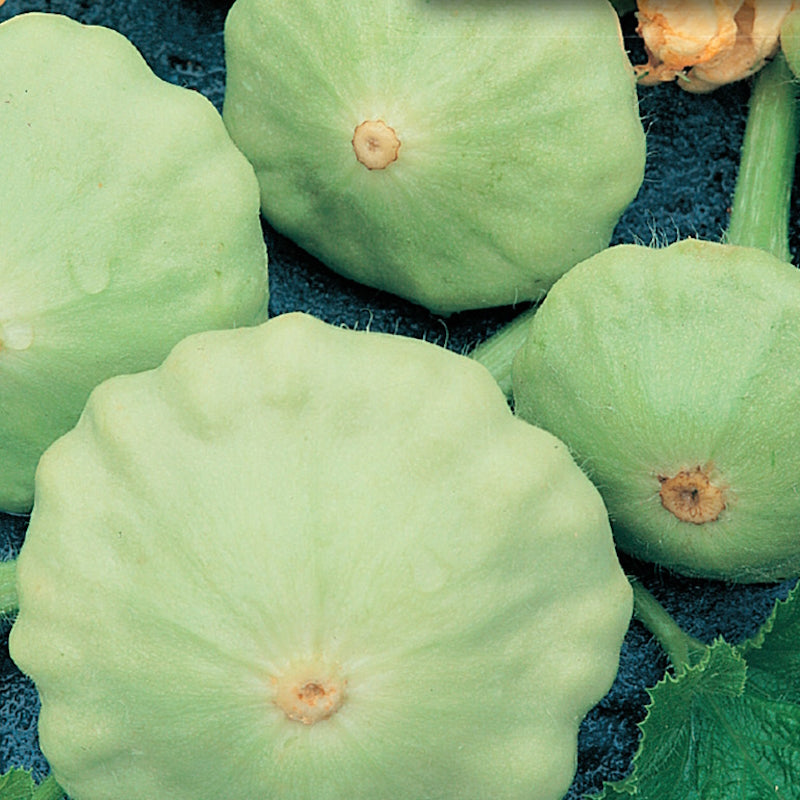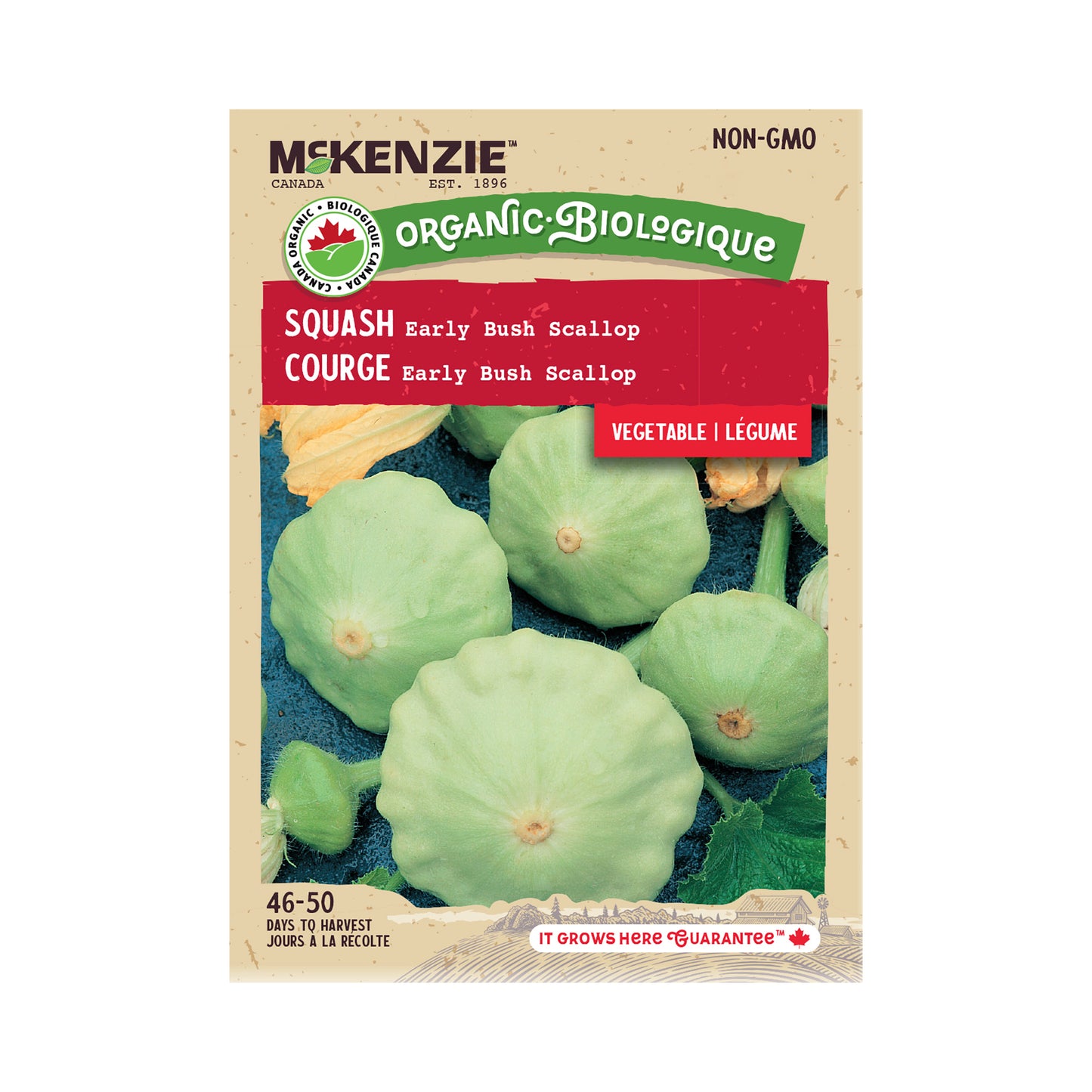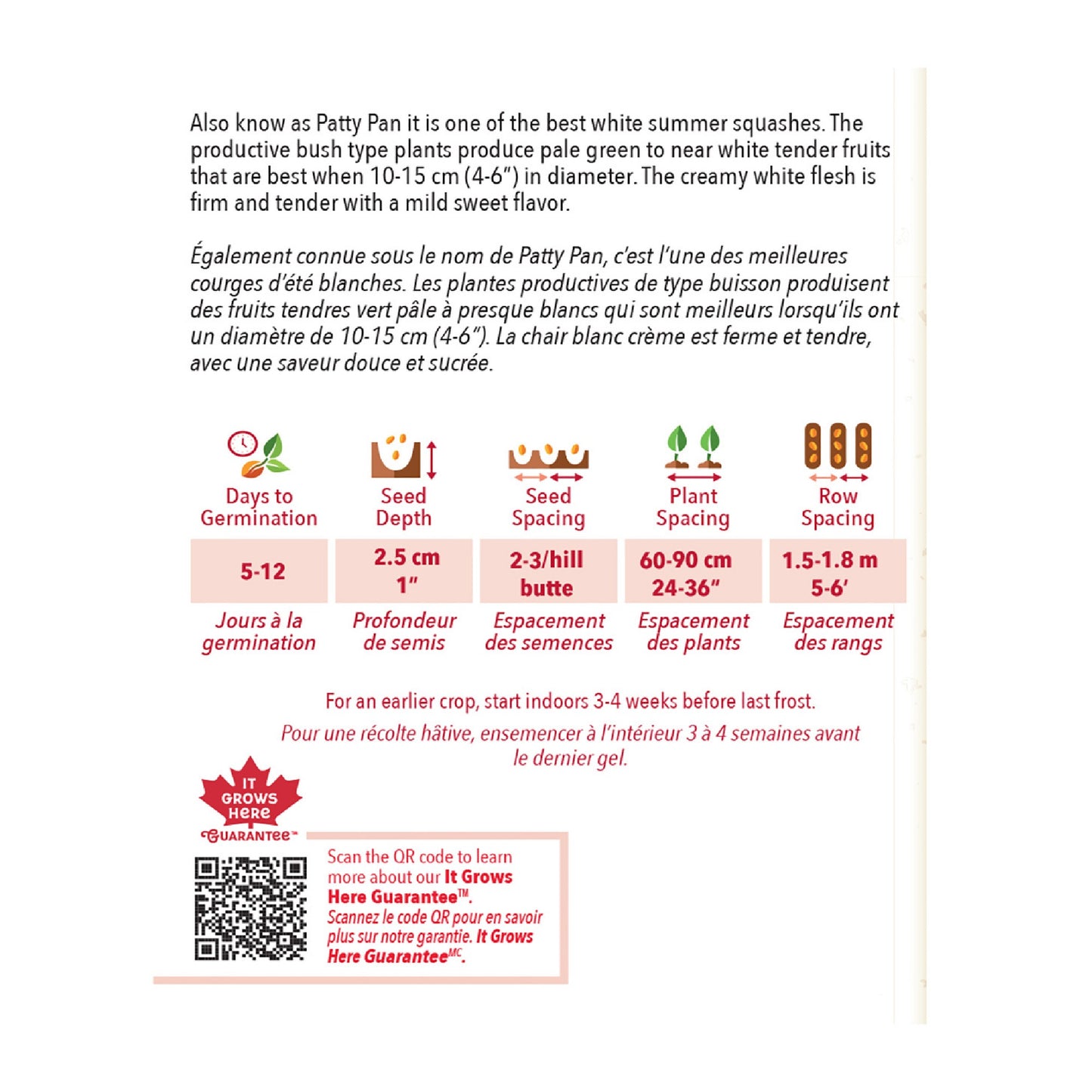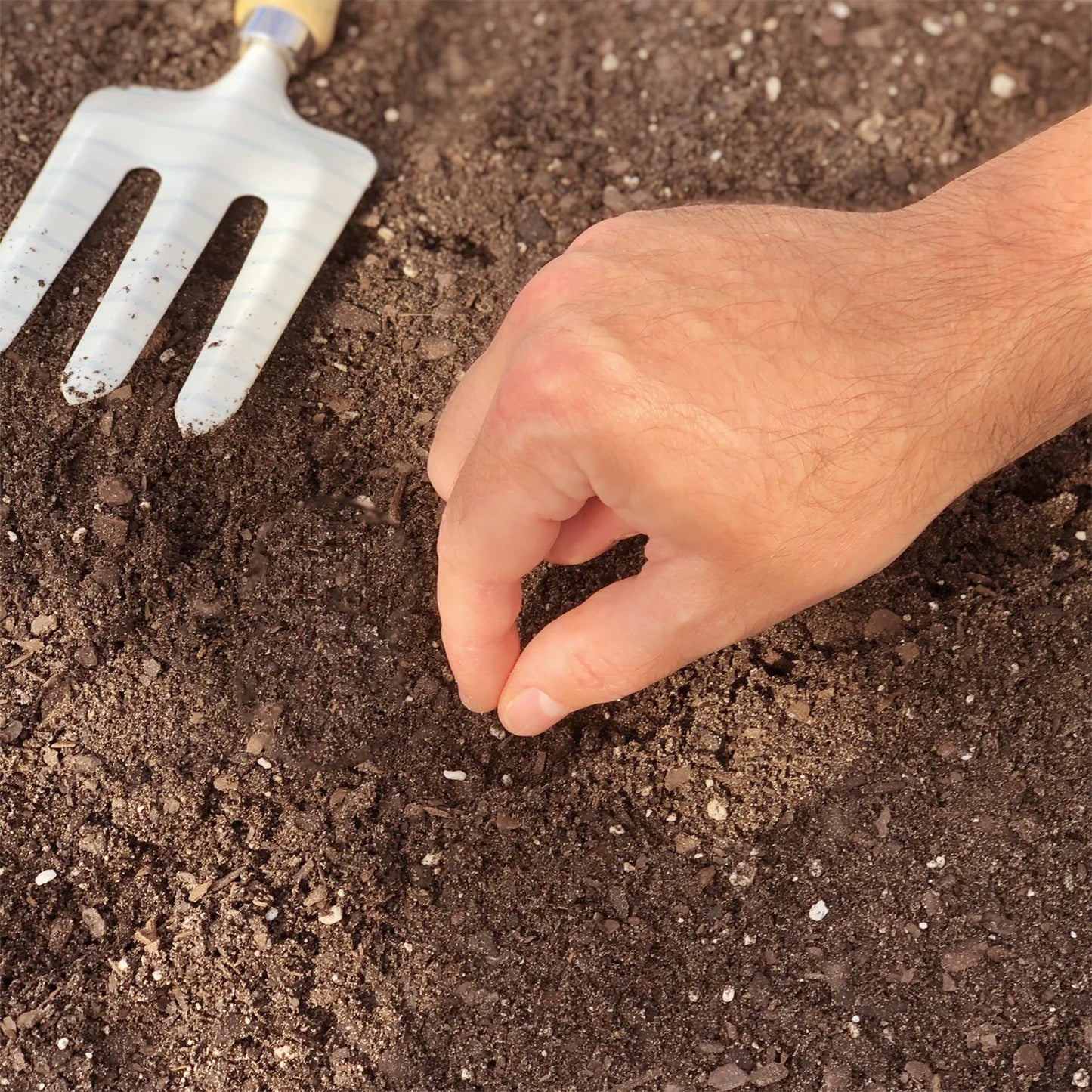Fall Holiday Weekend Sale — use code FALL30 at checkout. View All Offers >
Squash, Early Bush Scallop Organic Seeds
Earn 4 points for this item with our
rewards program.

The Early Bush Scallop Organic Squash is a classic summer squash variety prized for its distinctive scalloped edges and mild, nutty flavour.
Also known as Patty Pan, it is one of the best white summer squashes. The productive bush-type plants produce pale green to near white tender fruits that are best when 10-15 cm (4-6") in diameter. This heirloom bush-type plant is perfect for smaller garden spaces and produces beautiful, tender fruits that mature early in the season.
- SKU: 143205
- Common Name: Squash
- Botanical Name: Cucurbita pepo
Safe
for Bees
Grows
Best In:
Days to
Germination:
Water
Needs:
Days to
Maturity:
- Plant Type: Vegetable
- Plant Lifecycle: Annual
- Seed Type: Heirloom
- Fill Weight (grams): 3 g
- Approximate Seed Count: 20-25
- Planting Method: Direct Sow
- Colour: Pale green
- Water Needs: Moist 5 cm (2") per week
- Landscape Use: Edible Garden
- Growth Habit: Summer
- Companion Planting: Plant near oregano, nasturtiums, zinnias. Oregano and zinnias attract pollinators and nasturtium will protect zucchini from aphids and whiteflies.
- Preparation Ideas: Preheat oven to 400 F. Cut squash in half verically. Tip: if too difficult to cut, place squash in oven for approximately 15 minutes on baking sheet, to soften skin. Scrape out seeds and fiber. Brush olive oil on the flesh. Place halves, skin side up, on parchment lined baking sheet and place in oven. When the skin is easily pierced with a knife, remove from oven. Allow to cool slightly and peel or cut skin off flesh. Mash like potatoes and season with salt & pepper.
-
Growing Instructions:
- Planting Depth: 2.5 cm (1")
- Seed Spacing: Sow 2 - 3 squash seeds per hill apart in rows, keeping rows approximately 1.5-1.8 m (5-6') apart.
- Plant Spacing: 60-90 cm (24-36")
- Instructions for Nutrient Care: Feed plants SUPERthrive once per week. Mix 1.2 ml (1/4 tsp) per 4L (1 gallon) of water in a watering can and apply solution to the base of the plants.
Squash seeds can be sown directly in the garden when the soil is warm and all danger of frost is past and the soil has warmed. Soil temperature (not air temperature) should be between 15°- 21°C (60°- 70°F). Plant 2-3 seeds in mounds 1.5-1.8 m (5-6') apart. Press seeds into the soil to ensure good contact and cover with 2.5 cm (1") of soil. After planting, water the seeds with a gentle mist or shower. It is critical to keep the soil consistently moist, but not soggy during germination. When your seedlings reach a height of a few centimetres (inches) and have developed 2 or 3 pairs of leaves, it is important to thin them out, according to the plant spacing indicated below. Do not allow the soil to become dry, as young plants have underdeveloped roots and can quickly dehydrate, particularly in windy conditions.
For an earlier crop, squash seeds can be started indoors 3 to 4 weeks before the last frost in your area. Follow the seed depth and spacing guidelines indicated below. Once all danger of frost has passed, seedlings should be hardened off before planting in their growing location. Seedlings should be transplanted according to the plant and row spacing directions below. Regularly monitor your plants and ensure that the soil remains moist, but not soggy while they establish themselves in their new environment.
Click here to read more information on planning and planting a garden.
- Use a row cover during the first few weeks of seedling growth to protect plants from insect pests. Remove covers before flowering to allow pollination by insects.
- Try to water plants at the base of the plant rather than overhead unless it's a sunny day. Dampness on foliage and fruit invites rot and disease.
- Squash have shallow root systems and care should be taken when cultivating and weeding near the plants.
- Squash plants have distinct male and female flowers. The male flowers appear first on long, thin stalks, followed by the female flowers with an immature fruit at the bottom. For the female flowers to produce fruit, they require pollen from the male flowers to be transferred to them by bees.
- Poor pollination can result in squash flowers that do not bear fruit, or that bear small fruit. Consider growing bright-colored flowers nearby to attract pollinators.
- If you're growing squash with a bush or vining habit, it's important to check for overcrowding and thin out a few lateral (non-main) stems or lower leaves (especially those touching the ground) to ensure better air circulation. This can help prevent the spread of disease like powdery mildew, reduce hiding spots for insect pests and make it easier for pollinators to find the flowers. Keep in mind that overcrowding can also cause weakened growth, so it's important to leave enough leaves for the plant to produce food for itself. Don't prune more than 1/3 of the plant.
- An idicator that squash is ready to harvest is when th stem turns from green to brown woody stripes where it joins the fruit. When harvesting, cut the squash from the vines using a sharp knife or pruners. Avoid twisting or pulling fruits from the vines. Leave about 5-7 (2-3") of stem on each squash.




Squash, Early Bush Scallop Organic Seeds
Register to receive a notification when this item comes back in stock.
Thanks! We'll let you know when this item is back in stock.
You may also like

Join our rewards program today to start saving!

Free Shipping on orders over $35

There are a ton of ways to earn!







